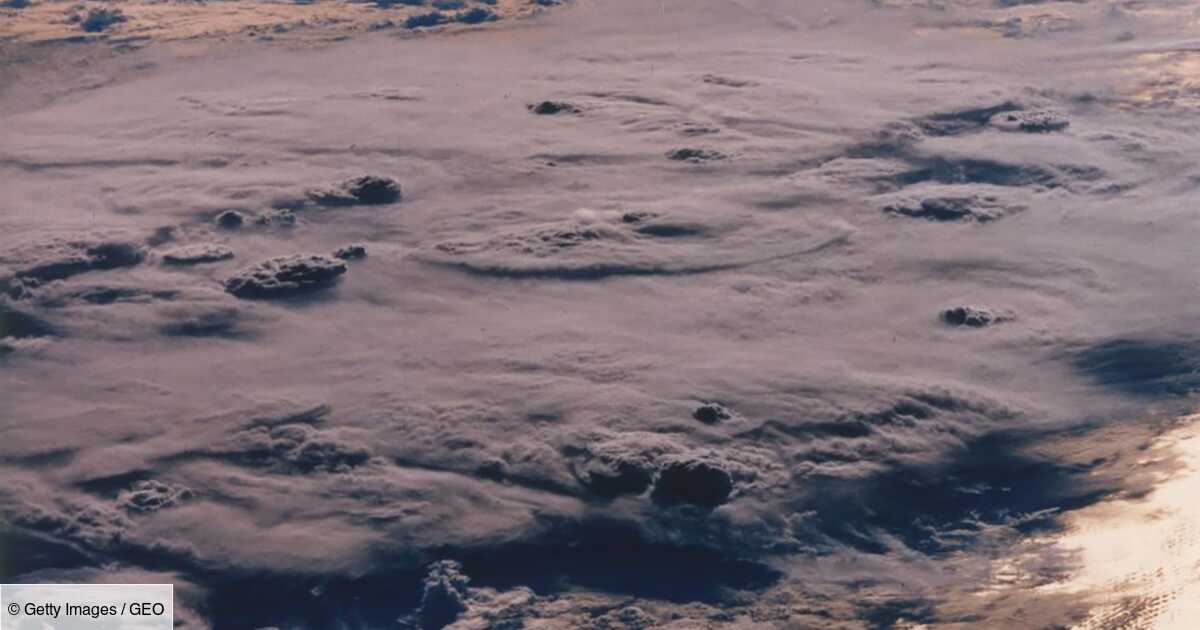
What is a space hurricane?
By analyzing satellite data, researchers from Shandong University have discovered a massive flow of plasma in the Earth’s upper atmosphere. Pushing their investigations, they discovered that this geomagnetic storm was a real space tornado.
⋙ Insurance scams and assassinations, when conspiracy theories attack the sinking of the Titanic
Space hurricane: A geomagnetic storm associated with the aurora borealis
A space hurricane is a geomagnetic storm that occurs over the Earth’s polar ionosphere. This phenomenon is caused by the interaction between the solar wind and the Earth’s magnetic field.
The solar wind is streams of ions and electrons ejected from the sun’s atmosphere at speeds of more than 2,000 kilometers per second. When these flows encounter the Earth’s magnetosphere, the magnetic field lines capture some of the charged particles. These particles remain trapped at Earth’s pole level, stirring up oxygen atoms in the ionosphere (the upper atmosphere, which lies between 60 and 1,000 kilometers above sea level). The atoms get rid of this excess energy by emitting a photon. This luminous phenomenon is known as the “aurora borealis” (“aurora borealis” in the northern hemisphere).
⋙ Who is Chrysopelea, the “flying serpent”?
Giant whirlpool
Aurora borealis occur during large solar flares. When the solar wind is very fast, it does not change its trajectory. In contrast, quiet solar and geomagnetic activity allows the solar wind to rotate with Earth’s magnetic field, forming a solar hurricane.
Upon entering the magnetosphere, the solar wind begins to rotate, forming a whirlpool tens of thousands of kilometers high. The vortex portion of the ionosphere takes the form of a spiral with several arms rotating in a counterclockwise direction. The hurricane is centered on the Earth’s magnetic pole, and has an eye in the center, as in the case of a tropical cyclone. In this eye, the aurora is formed, but it rises towards space: electrons “rain down”, and then leave again through the eye of the hurricane.
The tallest tree in Asia has been discovered in the deepest canyon in the world
2021: Discovery of the first space hurricane
In 2014, researchers from Shandong University in China detected large amounts of plasma entering the magnetosphere. In addition to lasting 8 hours, the phenomenon occurs over the North Pole, which leads them to believe that it is not just an aurora. Indeed, these, seen in the Arctic, generally last only a few minutes. It wasn’t until 2021 that the researchers, after collecting plenty of data, gave their verdict: What they observed was a space tornado. The cyclone had a diameter of 1,000 km, was located between 110 and 860 km above sea level, and was rotating counterclockwise at a speed of 2 km per second.
⋙ This tool allows you to see the effects of climate change around you in 2050
Despite its enormous size and power, the space tornado of 2014 was not visible to the naked eye. The hurricane occurred during the boreal summer, that is, during the period when the North Pole was exposed to the sun’s rays. Can’t take a snapshot, due to lack of night. However, scientists have been able to observe the phenomenon through surveys. Like the aurora borealis, a space hurricane blocks radio frequencies that pass through the upper atmosphere. In addition to affecting the operation of telecommunications equipment, the hurricane is likely to warm the atmosphere, which could disrupt the orbit of satellites.
The space hurricane observed in 2014 is likely to be neither the first nor the last. Scientists believe that this phenomenon can also occur on other planets with a magnetic field.
On the same topic:
⋙ Stars can disappear in 20 years
⋙ Scientists discover the fastest ‘runaway star’ ever observed
⋙ Oddly bright, will Betelgeuse’s star finally explode?
⋙ What is the difference between a planet and a star?

“Incurable web evangelist. Hipster-friendly gamer. Award-winning entrepreneur. Falls down a lot.”
